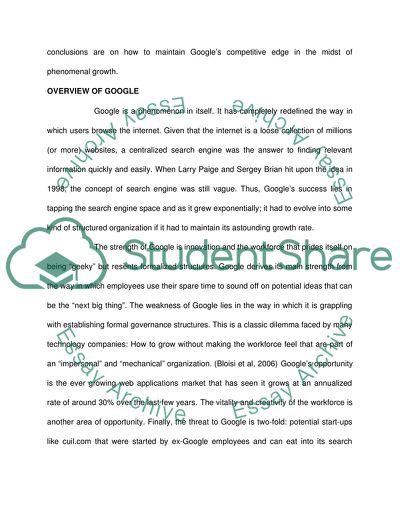Cite this document
(Organizational Design of Google: Approaches and Applications Case Study, n.d.)
Organizational Design of Google: Approaches and Applications Case Study. Retrieved from https://studentshare.org/information-technology/1732454-organisational-design-approaches-and-applications
Organizational Design of Google: Approaches and Applications Case Study. Retrieved from https://studentshare.org/information-technology/1732454-organisational-design-approaches-and-applications
(Organizational Design of Google: Approaches and Applications Case Study)
Organizational Design of Google: Approaches and Applications Case Study. https://studentshare.org/information-technology/1732454-organisational-design-approaches-and-applications.
Organizational Design of Google: Approaches and Applications Case Study. https://studentshare.org/information-technology/1732454-organisational-design-approaches-and-applications.
“Organizational Design of Google: Approaches and Applications Case Study”. https://studentshare.org/information-technology/1732454-organisational-design-approaches-and-applications.


